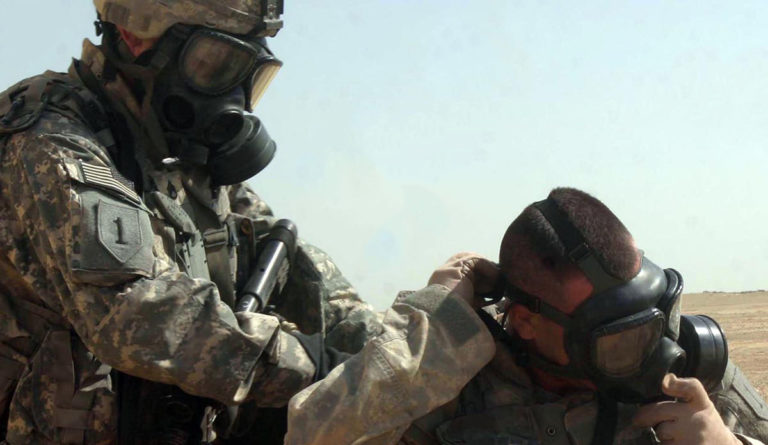Are Post-9/11 Veterans Experiencing a New Version of Gulf War Illness?
Veterans of Iraq and Afghanistan are reporting a similar constellation of symptoms that affect veterans deployed to the Persian Gulf in 1990-1991.

Read Time: 4 minutes
Published:
Gulf War illness (also known as Gulf War syndrome, Gulf War veterans’ illnesses, and chronic multi-symptom illness) is a collection of chronic symptoms that affects a substantial minority of veterans deployed to the Persian Gulf in 1990-1991. Studies have found these symptoms typically include headache, widespread pain, mood disturbances, respiratory problems, persistent and unexplained fatigue, memory and other cognitive difficulties, gastrointestinal disturbances, and skin rashes.
These symptoms lack a clear medical explanation, but the current understanding points to toxic exposures: for example, pyridostigmine bromide, nerve agents, chemical weapons, and pesticides. These exposures may have led to excess health problems in approximately 34% of Gulf War veterans.
Now, veterans of the recent conflicts in Iraq and Afghanistan are reporting a similar constellation of symptoms. My colleagues and I have begun investigating a potential link between toxic exposures during deployment and chronic multi-symptom illness (CMI).
Participants in our study were veterans who served in the Iraq or Afghanistan war after September 11, 2001. Veterans who also served in prior conflicts like the Vietnam War or the Gulf War were excluded. This ensured that the results represented only veterans exposed to hazardous substances during post-9/11 deployments.
In our sample of 224 veterans, 97.2% reported experiencing one or more potentially toxic exposures during their Iraq or Afghanistan deployment(s).
In our sample of 224 veterans, 97.2% reported experiencing one or more potentially toxic exposures during their Iraq or Afghanistan deployment(s). The most commonly reported experiences were inhaling smoke/air pollution (83.5%), being exposed to burning trash/feces (83.5%), and inhaling fumes/exhaust from heaters or generators (80.0%). Other exposures included, but were not limited to, pesticides, insect repellents, diesel or other petrochemical fuel, and chemical or biological weapons.
We found an association between toxic exposures and CMI symptoms. Of the nine CMI symptoms defined by the Centers for Disease Control, the veterans in our study reported fatigue, sleep problems, difficulty concentrating, irritability, anxiety or depression, and musculoskeletal pain. These six symptoms are further grouped into three “clusters” of symptoms: 1) fatigue, 2) mood and cognition, and 3) musculoskeletal pain. Nearly three-fourths (71.4%) experienced at least one of these six symptoms. Moreover, 37.1% met criteria for a diagnosis of CMI (two of the three symptom clusters) and 10.3% reported experiencing all three clusters of symptoms.
Pesticide exposure predicted CMI symptoms after controlling for the previously mentioned variables, but exposure to smoke inhalation did not.
Toxic exposures were significantly associated with CMI symptoms, even after accounting for demographic variables (e.g., age, gender, and years of education), combat exposure, smoking status, and post-traumatic stress disorder symptoms that do not overlap with CMI. We did additional analyses to determine whether certain types of toxic exposures were more strongly associated with CMI symptoms than others. We focused on pesticide-type exposure (i.e., environmental pesticide, pesticide in uniforms or flea collars, DEET insect repellants) and smoke inhalation (i.e., smoke/air pollution, fumes/exhaust from heaters or generators, and burning trash/feces). Pesticide exposure predicted CMI symptoms after controlling for the previously mentioned variables, but exposure to smoke inhalation did not.
This is the first empirical study to provide evidence that post-9-11 veterans were exposed to toxic substances similar to Gulf War veterans and are experiencing similar CMI symptoms. Further research is needed to examine toxic exposures in real time during deployment, as exposures vary significantly, and some soldiers may not be aware that they have been exposed. This type of data collection could examine the severity and chronicity of the exposure, both of which were not examined in this study. Further, prevalence studies of CMI symptoms in this population and treatment to reduce CMI symptoms are also needed.
Feature image: The U.S. Army, U.S. Army Soldiers put their gas masks on for a simulated chemical attack during a training mission near Camp Ramadi, Iraq, Sept. 25, 2007. U.S. Marine Corps photo by Sgt. Andrew D. Pendracki. www.army.mil. Used under CC BY 2.0.




